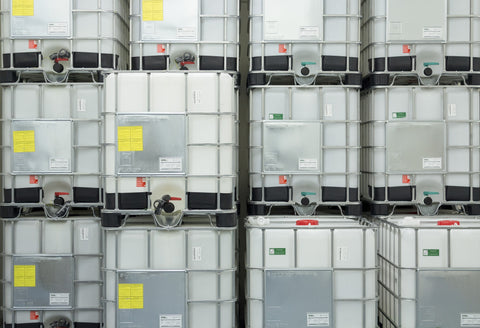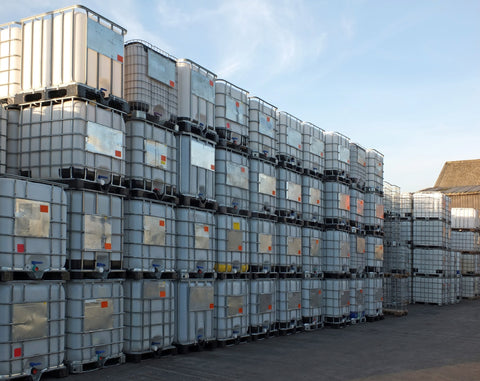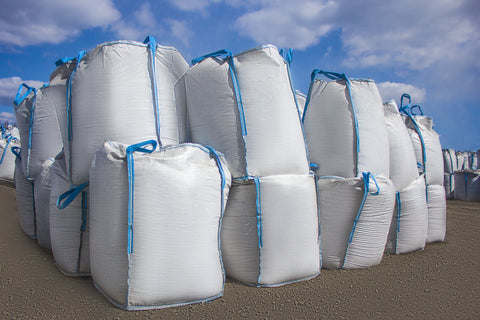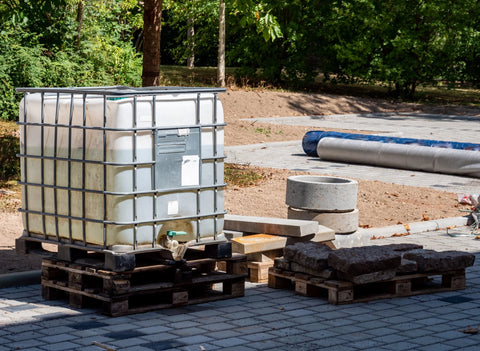Unveiling the Importance of Caustic Soda in Water and Waste Treatment
In the world of water and waste treatment, one chemical reigns supreme: caustic soda, also known as sodium hydroxide. Its significance in neutralization and chemical reactions is unparalleled. In this article, we'll delve into the fascinating realm of caustic soda viscosity and how maintaining it at the right level is crucial for water and waste treatment processes. We will also explore the use external heating elements to control the temperature of caustic soda, especially in colder climates or seasons.
Caustic soda, or sodium hydroxide, is a chemical powerhouse in the realm of water and waste treatment, driving critical neutralization and chemical reactions. Understanding and controlling its viscosity is pivotal in optimizing these processes, particularly in colder climates, where temperature fluctuations can pose challenges. Tote heaters and tote heating jackets emerge as vital tools to maintain the ideal temperature.
Traditional Storage and Varying Forms of Caustic Soda
The storage of caustic soda is a crucial aspect of its management in various industrial processes, including water and waste treatment. Traditionally, caustic soda has been stored in large containers or storage tanks designed to accommodate the quantities required for specific applications. These storage tanks, made of a variety of materials, are typically constructed from materials resistant to the corrosive properties of sodium hydroxide, such as stainless steel or specialized plastics.
Caustic soda is known to exist in various forms, and its storage can be tailored to these forms. A liquid solution is one of the most common forms, where sodium hydroxide is dissolved in water to create a stable and versatile product. This liquid form is especially convenient for dosing and mixing, making it an ideal choice for many treatment processes.
However, caustic soda can also be encountered in solid form. In colder temperatures, concentrated sodium hydroxide can crystallize and turn into a solid monohydrate, which presents storage challenges due to its increased viscosity. Facilities operating in colder climates or during the winter months must consider the potential solidification of caustic soda and take measures to prevent it.
The choice between liquid and solid storage forms often depends on specific process requirements and environmental conditions. Liquid solutions are favored for their ease of use, but they may require temperature control in colder climates to prevent solidification. In contrast, solid forms of caustic soda are more stable in cold conditions but may necessitate additional steps for dissolution before use. One must also consider how the state of the sodium hydroxide will affect how it must be moved around the facility.
In recent years, advancements in caustic soda storage have led to the development of innovative solutions, including airtight containers and specialized storage tanks designed to maintain the chemical's integrity and prevent contamination. These modern storage methods not only enhance the safety of handling caustic soda but also contribute to its overall efficiency and effectiveness in various applications.
Understanding the different forms of caustic soda and their storage requirements is fundamental to its successful use in water and waste treatment processes. Whether in liquid or solid form, proper storage ensures a steady supply of this vital chemical, contributing to the seamless operation of crucial industrial procedures.
Caustic Soda in Water and Waste Treatment
Caustic soda, with its chemical formula NaOH, plays a pivotal role in various water and waste treatment processes. It is an indispensable agent in neutralizing acidic effluents and promoting chemical reactions that are essential for treating wastewater. Sodium hydroxide solutions are highly versatile, making them suitable for a wide range of applications in this field.
Sodium hydroxide, scientifically known as NaOH, stands as a cornerstone in water and waste treatment, acting as a potent agent for neutralizing acidic substances and catalyzing vital chemical reactions. Its versatility allows for its widespread use in diverse applications within the realm of water and waste treatment.

Caustic Soda's Versatility in Water Treatment
Beyond its role as a neutralizing agent, caustic soda demonstrates remarkable versatility in water treatment processes. It doesn't merely address acidity; it also plays a crucial role in dealing with impurities and contaminants. Sodium salts, a byproduct of caustic soda's reactions, contribute to the removal of various metals and compounds from water. This multifaceted application underscores the chemical's significance in ensuring the purity and safety of our water supply.
Environmental Impact and Sustainability
While caustic soda is invaluable in water and waste treatment, it's essential to consider its environmental impact. The extensive use of sodium hydroxide raises concerns about its disposal and potential effects on ecosystems. Addressing these issues is critical for achieving sustainability in water treatment. Responsible management practices, along with innovations in recycling and disposal, aim to mitigate the environmental footprint of caustic soda and align its role with broader sustainability goals.
Sodium Hydroxide: A Key Player in pH Regulation
One of the lesser-known roles of sodium hydroxide is its contribution to pH regulation in various industrial processes. Whether it's in water treatment, power plants, or chemical reactions, sodium hydroxide is employed to adjust and maintain the desired pH levels. This precise control is crucial for ensuring the effectiveness of these processes.
Understanding the Importance of Viscosity of Caustic Soda
Defining viscosity, the measure of a fluid's resistance to flow is a key property when handling caustic soda. It affects the ease of pouring and mixing, which are critical steps in many treatment processes. Caustic soda solutions are known for their variable viscosity, and this property can have a significant impact on efficiency and safety.
Viscosity, the property that defines a fluid's resistance to flow, becomes a central concern in the handling of caustic soda. The ease of pouring and mixing hinges on this property, influencing the efficiency and safety of various treatment processes. Caustic soda solutions, with their variable viscosity, demand careful consideration in handling.
Challenges in Cold Climates
In colder climates or during winter, the challenges posed by caustic soda become more apparent. The low temperatures can lead to an increase in viscosity, making it thicker and more challenging to work with. When concentrated sodium hydroxide turns into a solid monohydrate in cold conditions, problems can arise, hindering its applications.
Cold climates and winter conditions exacerbate the challenges associated with caustic soda. As temperatures drop, the viscosity of this chemical increases, rendering it thicker and more cumbersome to manage.
Regulating Caustic Soda's Temperature for Optimal Viscosity
In the battle against cold weather challenges, the use of a heating element emerges as a critical tool for maintaining caustic soda's temperature within the ideal range. By ensuring that caustic soda remains in its liquid form, heating elements for totes contribute to smoother processes in water and waste treatment facilities, even when the mercury plummets.

Temperature Control in Action: Enhancing Efficiency and Safety
A closer look at the practical implementation of temperature control using various heating options shows that this approach offers more than just preventing solidification. By maintaining the appropriate temperature, facilities can optimize the efficiency of their caustic soda usage. Furthermore, enhanced safety measures come into play, reducing the risks associated with handling highly soluble sodium hydroxide. This dual benefit of efficiency and safety underscores the invaluable role of precise temperature control in water and waste treatment operations.
The Science Behind Temperature Control
Understanding the science behind temperature control is essential when dealing with caustic soda. As temperature increases, caustic soda's properties undergo significant changes. For instance, its melting and boiling points determine its state (solid or liquid), impacting its ease of use. Mastery of these temperature-related characteristics is key to efficient caustic soda management.
Ensuring Smooth Operations With Precision Caustic Soda Temperature Control
In conclusion, mastering the flow of caustic soda by regulating its viscosity is vital for water and waste treatment facilities, ensuring the seamless operation of crucial processes. Sodium hydroxide, in its various forms, emerges as an indispensable ally in neutralization and chemical reactions. The deployment of tote heaters and tote heating jackets to control its temperature, even in the harshest climates, guarantees a continuous and reliable supply of this versatile chemical, thereby facilitating efficient treatment and maintaining high pH levels. These low-cost solutions safeguard against sodium hydroxide's solidification, securing its pivotal role in environmental protection and water purification for the foreseeable future.







